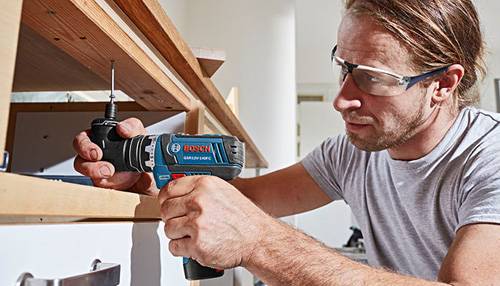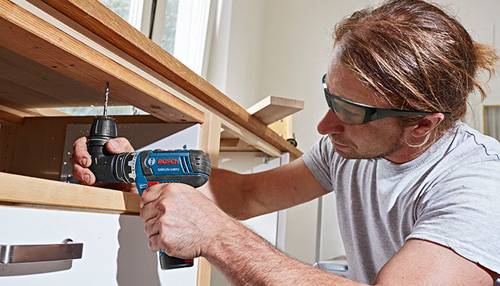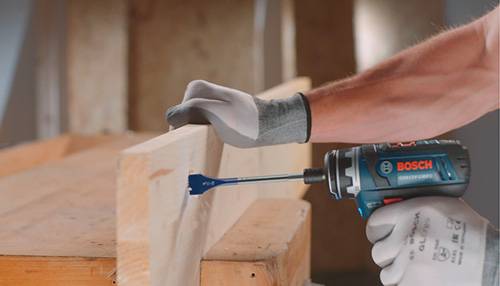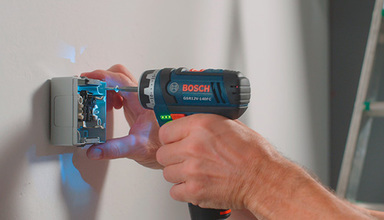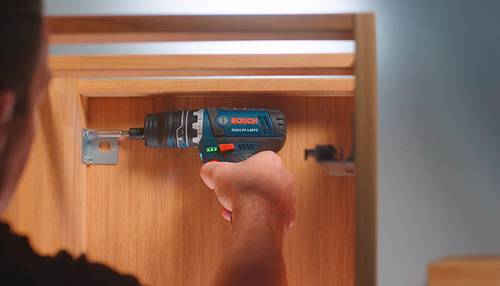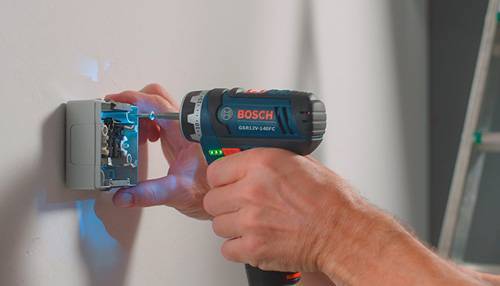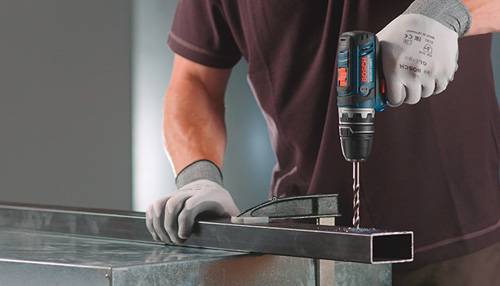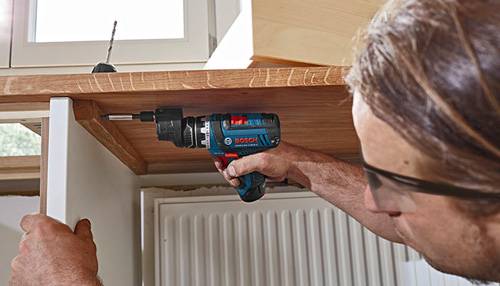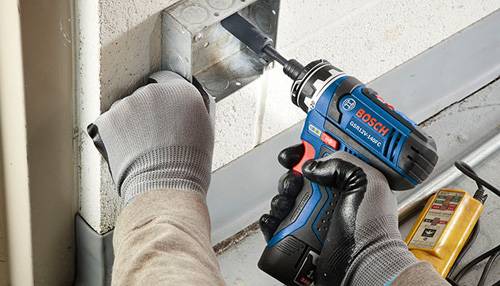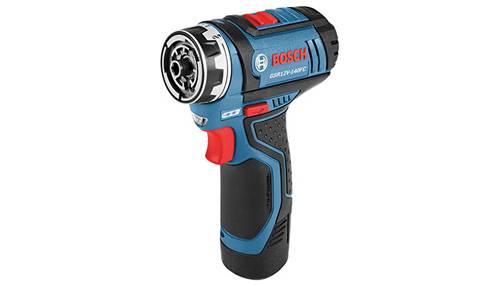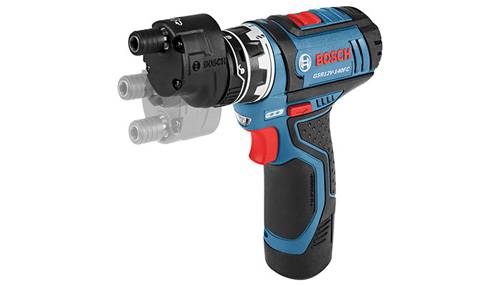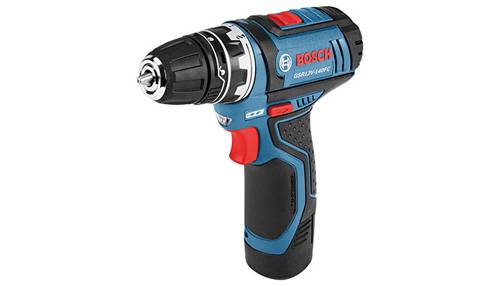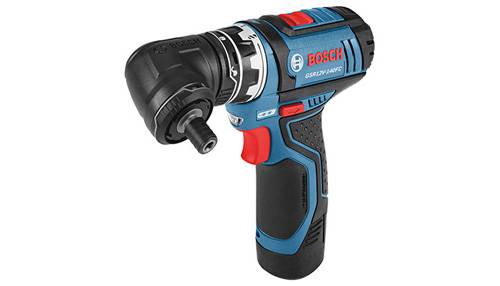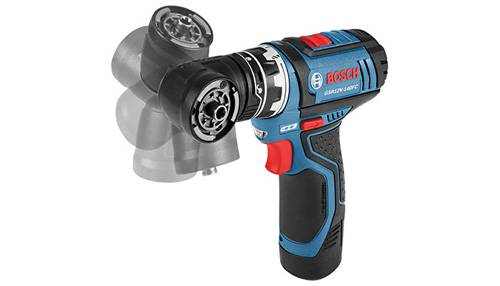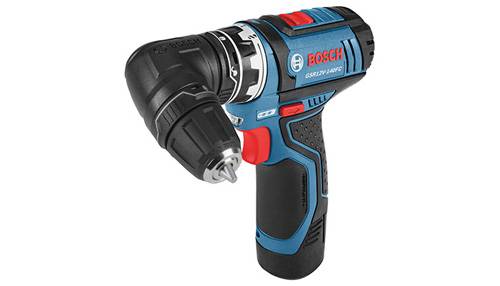Bosch Power Tools
The GSR12V-140FC Flexiclick system is a compact “pocket” drill/driver similar to the PS22 that Bosch came out with a few years ago. Unlike the PS22, the Flexiclick runs off of a brushed motor that’s powered by a 12V max compact battery. Both drill/drivers have a no-load rpm of 0-400 (Low or speed 1) and 0-1,300 (High or speed 2). The Flexiclick weights 1.8 lb. (with battery, without attachments). It comes with four attachments, each with its own unique skillset. Each attachment can be added or removed with a simple quarter–turn and “click.” The drill/driver itself, without the attachments, can accept a ¼-inch hex bit. This hex drive is magnetized so smaller bits won’t fall out, which is nice because it means you can use it in an ultra-tight scenario. For example, from the tip of a Phillip’s bit to the back of the drill/driver is a mere 5 ½”.
The drill/driver has 21 clutch settings (including typical “drilling” mode), as well as an LED, which turns on with the trigger. I found the LED to be okay – it was bright enough when working inside of a cabinet, though the attachments eclipse the light in most configurations making it only mildly useful. Various head attachment configurations will completely obstruct the light, making it completely useless. It’s a minor quibble considering that Bosch isn’t the only tool company in my opinion who has yet to figure out a perfect LED light location, but I didn’t like how this aspect functioned at all.
It has an onboard battery fuel gauge, as well. The gauge has 3 lights, counting down the battery’s level. When the battery is close to being fully discharged, the last light will blink two times to indicate it’s very low. Once the battery is depleted, the tool just stops working. A “fast charger” is included with the kit, which Bosch promotes as a 1 hour charger. I found that to be dependent on the temperature of the battery. A warm, well-worked battery placed directly on the charger took about 1 ½ hours to charge due to internal thermal protection technology within the charger. There’s no active cooling technology in these 12V Max “fast chargers” so battery and room temperature largely dictate charge time.
All-in-all, this is a really nice kit with loads of functionality and for a reasonable price (it lists for $200, but I’ve seen it readily available online for $170). The drill/driver is nicely balanced and also lightweight. It will stand on the battery solidly without any attachments, or with the ¼” locking bit holder. Add any of the other attachments and it needs to be set down on its side. There isn’t a belt hook, which seems to be by design. The tool fits easily in my Occidental Framer’s rig; a belt hook would be more of a nuisance here so I didn’t miss it. But the real point of not having a belt hook comes when you consider its typical use would likely be in finish/installation work. Plumbers, electricians, cabinet installers, carpenters will all appreciate that you can lay it down on any surface without worry of damaging the finish; there are thick rubber bumpers on the drill/driver’s head to protect the surface. The head is slightly tapered, too, to keep the collet from coming in contact with anything when it’s on its side.
In terms of power, thanks to EC brushless motors and battery technology these days, “little” drills like this pack some serious punch. The unit can easily drive 4” square-drive screws through 3 layers of 2x framing lumber; I even used it to drive ¼” x 2 ¼” Tapcons into concrete (I got about 30 screws set on a full battery) in low gear. It handled a 1” auger bit in studs and though it smelled like it was working pretty hard after several holes, it has an internal thermal overload sensor so I wasn’t ever concerned about burning the unit out. There were a couple of instances when I accidentally knocked the speed slide switch in between 1(low) and 2 (high) gears. In this instance the driver will spin and appear to be stripped. Flipping the switch back and forth a couple of times remedied this. I’ve asked Bosch whether the gear driving mechanism can get stripped in this scenario, but hadn’t heard back as of this printing. Where the tool really shines is with smaller jobs like drawer glides, electrical outlets, mounting boxes, pocket hole joinery, door hardware, etc. The right-angle attachment is one of things you won’t use often, but you’re glad you have it when you need it. Same for the offset attachment which is nice with door hardware and hinges. Point is, it’s got enough power to do most of what you’ll need – including drilling holes in various materials – and with 2 batteries, you’ll get through a good amount of work with it.
